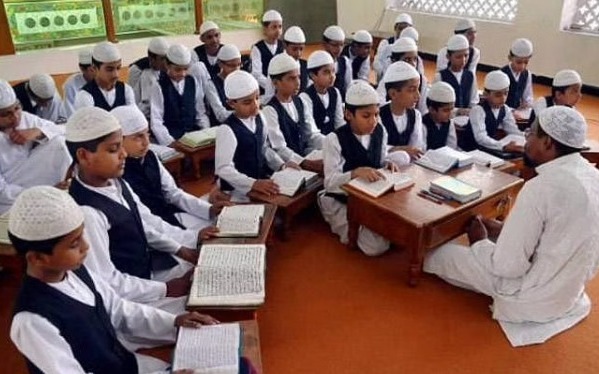
In a significant development, the Uttarakhand Waqf Board has unveiled plans to incorporate the study of Ramayana in its affiliated madrassas.
The initiative is set to commence in four selected institutions in Dehradun, Haridwar, Nainital, and Udham Singh Nagar districts, with the aim of “fostering cultural understanding and inclusivity.”
The new curriculum, slated for the upcoming 2024 academic session, will be taught alongside the Quran.
Waqf Board chairman Shadab Shams, while endorsing this move, highlighted the values of sacrifice and brotherhood present in both religious traditions.
Notably, a dress code will be introduced in the designated madrassas, and efforts will be made to enhance educational standards by implementing smart classes.
However, against this backdrop of cultural inclusion, there is a deeply concerning surge in anti-Muslim sentiment within Uttarakhand.
Reports reveal a systematic campaign rooted in three primary claims: alleged pollution of holy land, perceived demographic threats to Hindu identity, and accusations of perfidy leading to multiple ‘jihads.’
These divisive narratives are reportedly disseminated through Rashtriya Swayamsevak Sangh (RSS) shakhas, with extremist ideologies finding expression in hate speeches advocating violence against Muslims.
The Dharm Sansad in Hardwar, where calls for violence were openly made, underscores the gravity of the situation.
The alarming trend extends to threats of a “safai abhiyan” or cleansing drive against Muslims, challenging the fundamental right to religious freedom.
The Vishwa Hindu Parishad has reportedly issued ultimatums for the Muslim community to leave or face forced expulsion, contributing to an atmosphere of fear and insecurity among the approximately 14 percent Muslim population in Uttarakhand.
Author Profile

Latest entries
 REGIONALApril 3, 2025Waqf Amendment Bill: Here’s what parliamentarians from Jammu Kashmir said in Lok Sabha
REGIONALApril 3, 2025Waqf Amendment Bill: Here’s what parliamentarians from Jammu Kashmir said in Lok Sabha INDIAApril 3, 2025Political storm brews as JD(U) leaders resign over party’s support to Waqf Amendment Bill, more exits expected
INDIAApril 3, 2025Political storm brews as JD(U) leaders resign over party’s support to Waqf Amendment Bill, more exits expected REGIONALApril 3, 2025Cabinet expansion unlikely anytime soon in Jammu Kashmir
REGIONALApril 3, 2025Cabinet expansion unlikely anytime soon in Jammu Kashmir Representational ImageREGIONALApril 3, 2025Authorities shut alcohol shops illegally operating at Srinagar hotel
Representational ImageREGIONALApril 3, 2025Authorities shut alcohol shops illegally operating at Srinagar hotel
